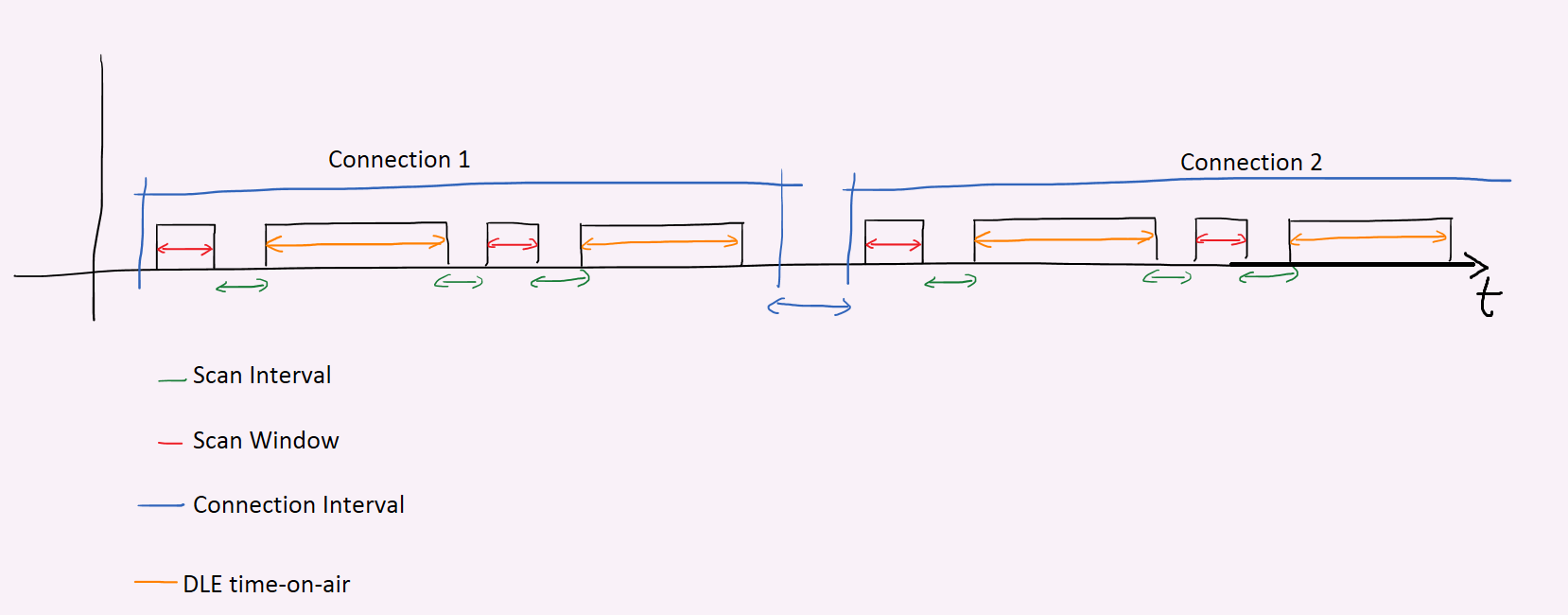Hello,
I am trying to understand a bit better BLE throughtput in order to use it for my application, having read this Nordic Blog, this post and ATT_MTU Throughput Example
I have a question regarding to the parameter so called Connection Interval, I have drawn the following sketch for myself to clarify my explanation. So, if I have understood properly, the parameter called Connection Interval is actually the minimun time between Connection1 (Peripherial<->Central) and Connection 2 (Peripherial<->Central), is that correct? Meaning that I have to wait Connection Interval in order to create another Conection 3 (no depicted) between my Peripherial and the Central, right?
Finally, in order to calculate the throughput of the BLE connection, that is done once the connection itself has been carried out, and therefore only Scan interval, Scan Window and DLE would be involved, wouldn't they?

Thanks in advance,


